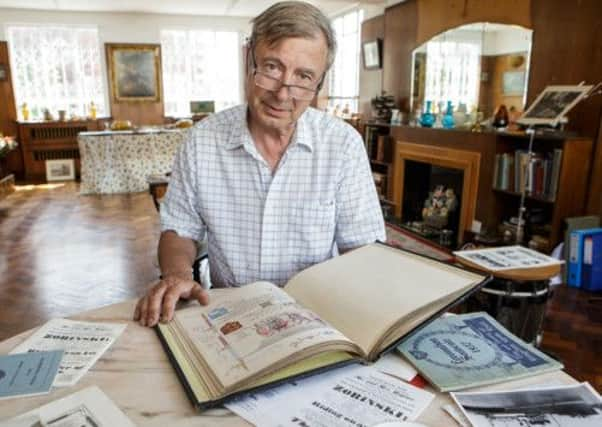Honouring the Lord who gave US its taste for our art


But despite being regarded as one of the most influential art dealers of all time, few in the Yorkshire city in which Lord Duveen was born would recognise his name or understand his international influence.
That should begin to change, however, with a new exhibition in Hull which has been organised to recall the “powerful and flamboyant” dealer who decorated Westminster Abbey for the coronation of Edward VII, built the Duveen Gallery to house the Elgin Marbles at the British Museum, and used his persuasive charm to help put together the art collections of many extremely wealthy Americans,.
Advertisement
Hide AdAdvertisement
Hide AdArt and antiques dealer Geoffrey Rhodes, who has opened the Duveen Gallery at 66 to 68 Humber Street, the city’s emerging arts quarter, plans to mount a display this autumn about Duveen, who is best known in the US for his achievements in the arts world.
The first son of Jewish-Dutch immigrants, born in English Street in the city in 1869, he left Hull when he was still only a youngster, but never forgot the city of his birth.
Hull’s Ferens Art Gallery was among those bequeathed paintings in his will and Mr Rhodes hopes the gallery may loan him one for the exhibition put on in the year the city competes to be City of Culture 2017.
His reputation has suffered in recent years, with modern observers questioning the quality of some of his decisions.
Advertisement
Hide AdAdvertisement
Hide AdHis restorers were accused of “making Old Masters look like new masters” by scraping off old varnish and giving them a glossy new finish and he was blamed for allowing damage to be inflicted on the Elgin Marbles through cleaning work, a process he financed in the late 1930s.
Another embarrassment is that some of the paintings he sold have also turned out to be fakes.
But Mr Rhodes, who has been a fan of Duveen since his childhood, shrugs off such criticisms.
He said: “The aim is to get people to appreciate probably the most charismatic man to ever come out of Hull.”
Advertisement
Hide AdAdvertisement
Hide AdDuveen, whose father had done “wonderfully well” as an antique dealer, was already making an impact on the New York art scene by the time he had reached the age of 17.
His success is summed up in his observation that while Europe had the art, America had the money; he used that knowledge to make his fortune by buying art from declining European aristocrats and selling the treasures he acquired to the likes of JP Morgan, William Randolph Hearst and John D Rockefeller.
A number of the collections became the nuclei of American museums including the Frick Collection in New York and the National Gallery of Art, Washington, and he provided seven galleries at the Tate.
Always outbidding the opposition he went to great lengths to get the best works and relied heavily on information he was able to acquire from servants Duveenat the great estates – one was said to have been given over £100,000 for tips which helped Duveen’s ambitions.
Advertisement
Hide AdAdvertisement
Hide AdLord Duveen – who was knighted in 1919 and granted a peerage in 1933 – was credited with making the best art deal in decades by convincing JP Morgan that he ought to spend £21m to acquire an art collection.
Mr Rhodes said: “JP Morgan had this apartment in Washington and Duveen managed to get a lease off someone for an apartment below him and got 46 of the greatest paintings that were for sale in the world and handed Morgan the key and said if you want to have a party, do.
“This went on for a year and Duveen was getting reports that Morgan was sneaking down there to look at the paintings and at the end of the year all his friends were saying how wonderful the collection was and at the end of the year he came to Duveen and said: ‘What will you take for the lot?’”
He added: “He did say whatever you paid for a work of art, you couldn’t pay too much, because you were exchanging the finite for the infinite.
Advertisement
Hide AdAdvertisement
Hide Ad“He sold the clients the paintings then put in their minds that the way to achieve immortality was to give their art, paintings and sculptures to the galleries.
“They could associate themselves with the Rembrandts and the Titians and they would survive hundreds of years when they felt suddenly mortal because their wives went off with people or their children died in car crashes.”